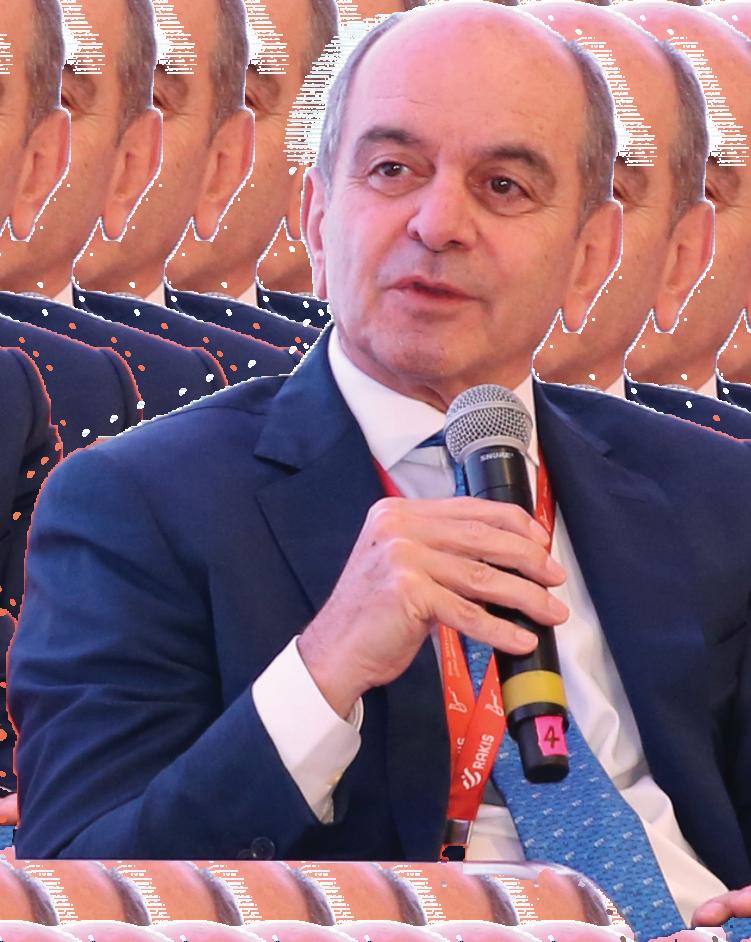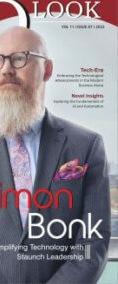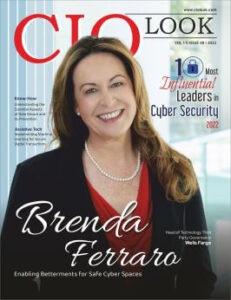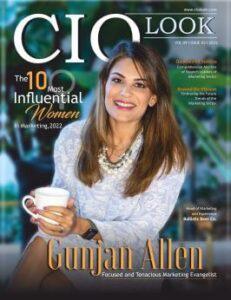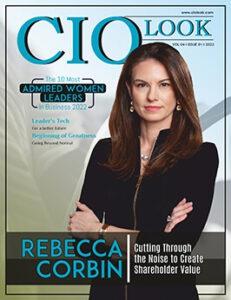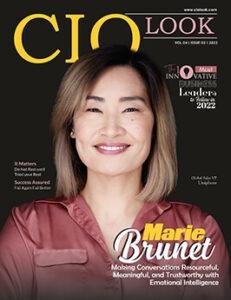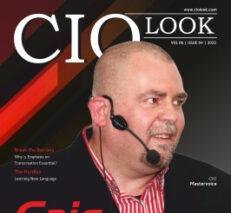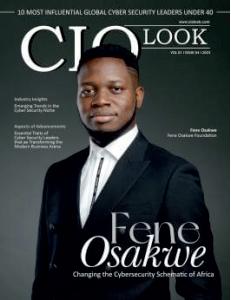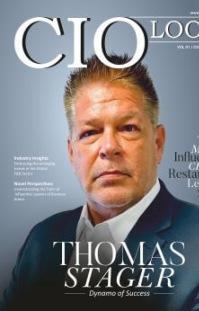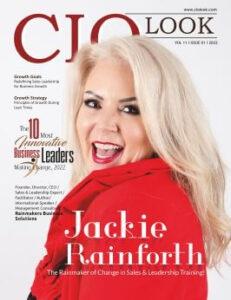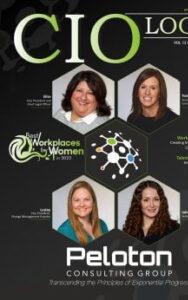















Inanerawhereeducationisbothevolvingandbeing
redefined,itisaprivilegetointroducethisspecial editionofCIOLooktitled: The Most Admired Educational Professionals to Watch in 2025.Aswestand attheintersectionofinnovation,inclusivity,and transformation,thiseditioncelebratesthosewhoarenot onlyadaptingtochange—butareactivelyshapingit.
Educationtodayextendsfarbeyondthewallsofa classroom.Ittoucheseverysphereofsocietyanddemands adynamicblendofleadership,empathy,vision,and resilience.Theprofessionalsfeaturedinthisissue exemplifythesequalitiesinaction.Theyarereformers, policymakers,institutionalleaders,researchers,edtech pioneers,andchangemakers—allcommittedtounlocking potentialanddemocratizingaccesstolearning.
Whatmakestheseindividualstrulyadmirableistheir abilitytoleadwithpurposeandpassioninuncertaintimes. Whetherit’sreimaginingcurriculumtonurturecreativity
andcriticalthinking,usingAItopersonalizestudent learningexperiences,orworkingtobridgegapsin underservedcommunities,theirimpactisfar-reachingand deeplyinspiring.
Incuratingthisedition,wesoughtvoicesthatarenotonly successfulbutalsodrivenbythebeliefthateducationcan andmustbeaforceforequity,progress,and empowerment.Theirstoriesareareminderthatgreat educationbeginswithgreateducators—thosewhodareto innovate,questionthestatusquo,andstayrootedinthe valuesofintegrityandservice.
Asyouturnthesepages,wehopeyouwillbeinspiredby theirjourneysandremindedoftheextraordinaryinfluence thateducationprofessionalshaveinshapingnotonly minds,butfutures.
HappyReading!
Richard C. Larson: A Legacy of Innovation in Operations Research and Education
Equipping Educators: Innovators Shaping the Future of Learning
Rebuilding the Learning Experience Unlocking the Secrets of Innovative Educators




PoojaMBansal Editor-in-Chief
CONTENT
Deputy Editor Anish Miller
Managing Editor Prince Bolton
DESIGN
Visualizer Dave Bates
Art & Design Director Davis Mar�n
Associate Designer Jameson Carl
SALES
Senior Sales Manager Wilson T., Hunter D.
Customer Success Manager Collins J.
Sales Execu�ves Tim, Smith
TECHNICAL
Technical Head Peter Hayden
Technical Consultant Victor Collins
SME-SMO
Research Analyst Eric Smith
SEO Execu�ve Alen Spencer

FOLLOWUSON www facebook.com/ciolook www.twi�er.com/ciolook

WE ARE ALSO AVAILABLE ON
Email info@ciolook com For Subscrip�on www.ciolookmedia.com CONTACTUSON
Copyright © 2025 CIOLOOK, All rights reserved. The content and images used in this magazine should not be reproduced or transmi�ed in any form or by any means, electronic, mechanical, photocopying, recording or otherwise, without prior permission from CIOLOOK. Reprint rights remain solely with CIOLOOK.
July,2025
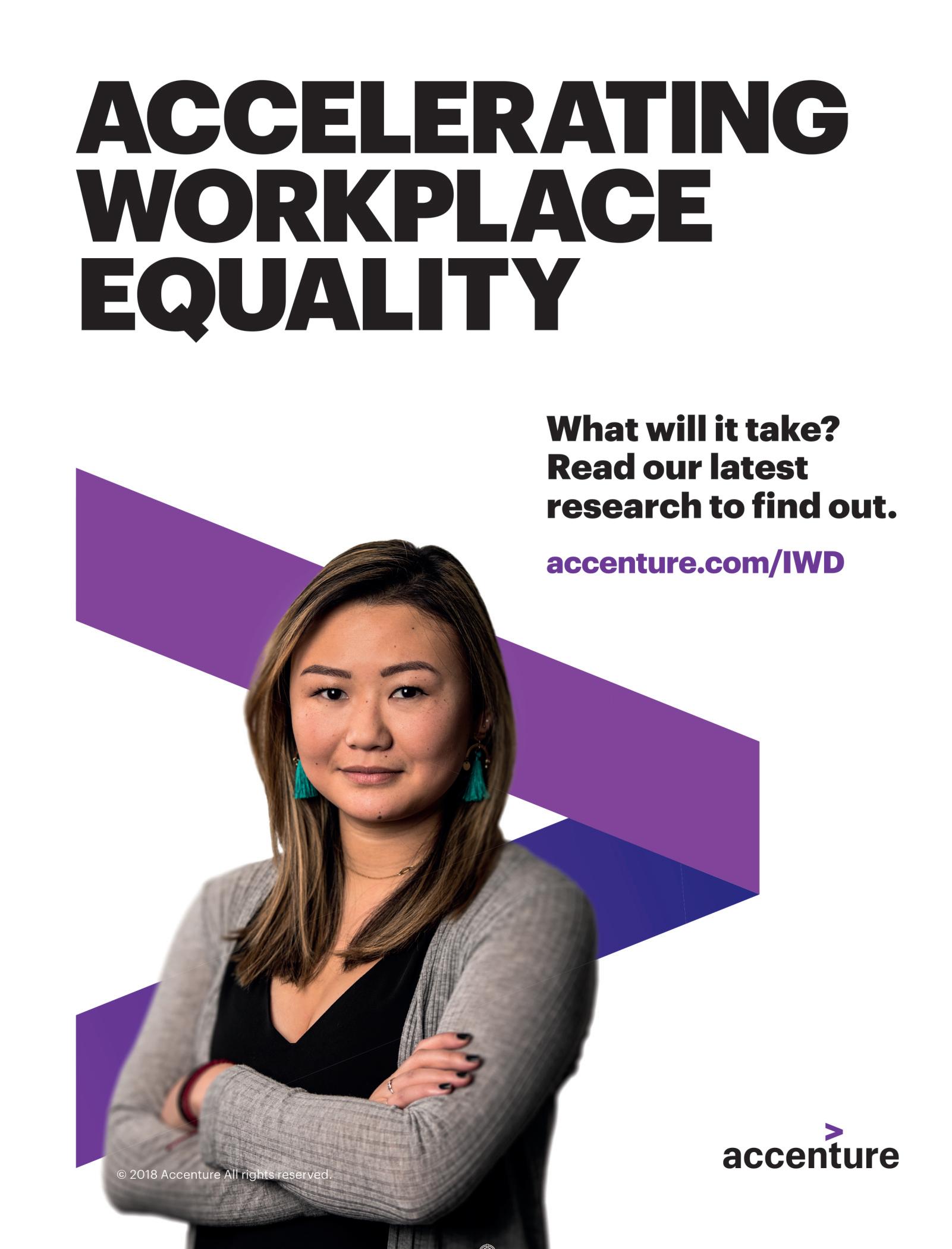

RichardC.Larson MIT Professor

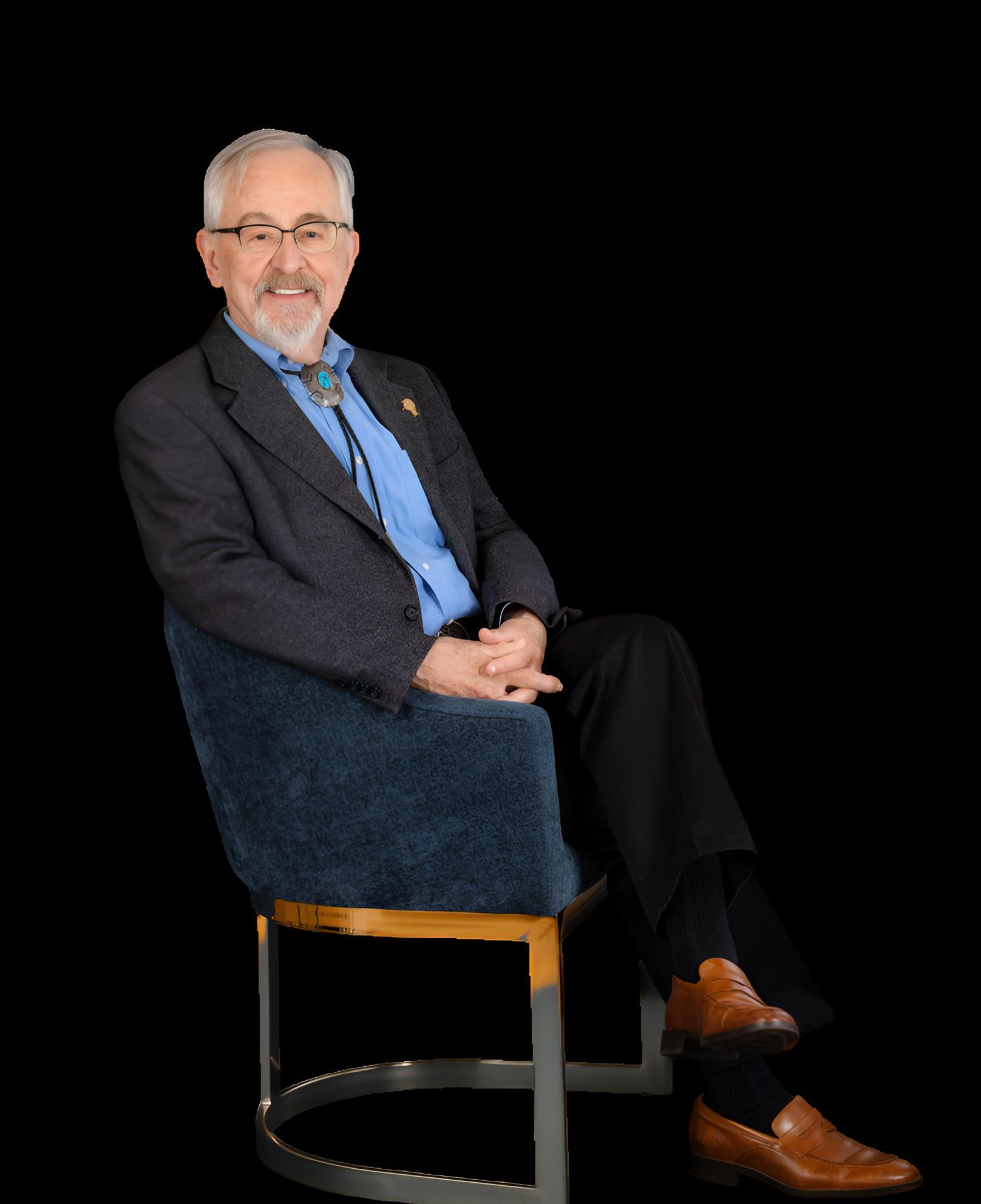


“ Effective solutions can only emerge from a deep understanding of operational realities.”
BeforeexaminingthedistinguishedcareerofRichard
C. Larson, it is necessary to acknowledge the significant impact a committed individual can have on academic fields, public system change, and world educational technology Richard's path is a testament to the long-term power of inquiry, service, and the never-ending questforpragmaticsolutionstocomplexproblems.
Richard, widely referred to as "Doctor Queue" due to his groundbreakingcontributionstoqueueingtheory,isamodel of cross-disciplinary scholarship and public influence. For over half a century at the Massachusetts Institute of Technology (MIT), Richard has established himself as professor,researcher,inventor,mentor,andleaderofthought. Hisdistinctivecombinationofmathematicalprecision,fieldbasedpragmatism,andforward-lookingleadershiphashada lasting impact on operations research, urban systems, and technology-facilitatededucation.Richard'slegacyisnotonly intermsofscholarlyworkandinstitutionalinnovationsbutin themyriadlivesenrichedbyhisdedicationtobridgingtheory andpractice.
Richardwasbornin1943inBayside,Queens,NewYorkCity He came from a family that prized education and curiosity, and Richard's early life was characterized by intellectual curiosity and a desire to comprehend the systems governing everydayexistence.Richardmovedaroundanumberoftimes asachildbeforegraduatingfromNeedhamHighSchooland thengoingontoattendMIT,wherehereceivedhisBachelor's, Master's,andPh.D.degreesinelectricalengineeringin1969.
Richard's years at MIT overlapped with an era of explosive innovation in applied mathematics and engineering. Guided by the best minds in operations research, he absorbed the value of closing the gap between academic theory and realworld application-a philosophy that would be the defining characteristicofhiscareer.
Operations research (OR) is a field of study that draws on multiple disciplines to use mathematical models, statistical methods,andoptimizationprocedurestoaddresschallenging decision-makingproblems.ForRichard,ORwasnotmerelya learnedacademicendeavorbutanactiveapproachfordealing

withthe"messy"issuesoftherealworld.HecharacterizedOR as"researchonoperations,"withafocusontheimportanceof working directly with real systems-public safety, transportation,healthcare,andeducation.
Richard's OR philosophy was characterized by an absolute commitment to fieldwork and actual-world involvement. Richard was convinced that only good solutions could arise


fromarichcomprehensionofoperationalrealities,frequently demanding researchers to "get their boots muddy." This philosophyfoundexpressioninhispracticewithpublicsector organizations, where he utilized OR principles to enhance emergency response systems, optimize urban infrastructure, andimproveservicedelivery
One of Richard's greatest achievements was helping to optimize New York City's 911 emergency call system. Throughtheapplicationofqueueingtheoryandsophisticated

schedulingmodels,Richardandhisgroupcutresponsetimes byahugemarginandoptimizedresourceuse.Althoughitis impossibletomeasurethefullextentofthesegains,Richard was adamant that their efforts saved lives and raised the bar forpublicsafetyoperations.
During the course of his career, Richard insisted that his successasascholarlayinhisstatusasapractitioner.



Regularly, he worked with public agencies, non-profit organizations, and industry partners, making sure that his research was responsive to pressing social needs This practitioner orientation shaped his instruction as well, as he advocated that students tackle problems directly and view theory and practice as inextricable parts of good problemsolving.
As a teacher, Richard was famous for combining tough theoretical training with practical, experiential learning. He eschewedastrictly"theorem-proof"pedagogy,believingthat operationsresearchstudentsneededtogainanintuitivegrasp ofactualsystemsthroughexperience.HisowncoursesatMIT focusedonfieldstudies,casestudies,andgroupprojectsthat forced students to use analytical methods on messy, unstructuredproblems.
Richard's impact was far-reaching beyond the classroom. Throughout his career, he guided many doctoral students, suchasKentW.ColtonandMaiaMajumder,whohavegone on to notable careers in academia, industry, and public service. His mentorship was marked by a sincere interest in the professional and personal growth of his students and a dedication to developing intellectual curiosity and moral responsibility.
Asidefromhisteachingduties,Richardoversawoff-campus consulting companies like Public Systems Evaluations, Inc. andENFORTHCorp.Thesefirmsgavestudentsthechanceto workonactualprojectsovertheirsummervacations,usually intoughurbansettingslikeNewYorkCity.Theexposureof workingonfieldoperationalissuesenrichedstudents'studies and motivated many to pursue meaningful careers in operationsresearchandalliedfields.
“ I’ve always considered myself a practitioner first and an academic second.”


Richard'spassiontoenhanceeducationdidnotstopatregular classrooms.Inseeingthetransformationalpotentialofdigital technology, he became an early and foremost champion for puttingtechnologyatthecenterofteachingandlearning.His enthusiasm in educational technology started when he witnessedthegoodimpactsofdigitaltechnologiesonhisown children's education, and so he wanted to find means of scalingsucheffectstowidercommunities.
Between 1995 and 2003, Richard was the director of MIT's Center forAdvanced Educational Services (CAES). During his tenure, CAES created and implemented technologyenabledlearningsolutionsforstudentsglobally,overcoming

geographical barriers and increasing access to quality education. The center's work provided the foundation for futureinnovationsinonlineandblendedlearningatMITand elsewhere.
In 2002, Richard established the Learning International NetworksConsortium(LINC),aninternationalorganization based at MITthat seeks to use technology to deliver quality education at scale. LINC united universities, policymakers, and practitioners from more than 25 nations to tackle the educational challenges of disadvantaged and remote communities. The consortium held international symposia, facilitated cross-border collaborations, and advocated the applicationofe-learning,distanceeducation,andinformation and communication technologies (ICTs) to democratize accesstoeducation.

“ Students need to be focused, energetic, inquisitive, willing to take risks, and wanting to make positive changes in the world.”
MIT BLOSSOMS: Blended Learning for Global Classrooms
Richard's most important contribution to educational technology is probably the MIT BLOSSOMS (Blended Learning Open Source Science Or Math Studies) project. AfteratriptoaChineseruralschool,Richardhadtheideaof interactive video lessons that would motivate students and empower teachers, rather than just deliver information BLOSSOMSdeliverscost-free,interactivemathandscience modules presented by teachers globally that can be woven into local-classroom practice. This blended technique has achieveduniformaccesstogoodqualitySTEMschoolingfor scholars of varied environments, especially in neglected areas.BLOSSOMSisanarchetypeforopencoursewareand hybridlearningacrosstheglobe.
Richard's research is both wide-ranging and profound, ranging from foundational contributions to queueing theory, urban operations, and systems engineering. His work has influenced the design and management of intricate service systems, ranging from emergency response networks to transportation infrastructure Richard's writing is characterized by clarity, practicality, and multidisciplinary appeal, which makes it readable both for academic and practitionerreaderships.
In his latest book, Richard has been concentrating on advocating "model thinking" for the masses. His interactive book, MODEL THINKING For Everyday Life: How to Make
Smarter Decisions, published by INFORMS, acquaints readerswiththetwomeaningsof"model"-bothasexemplary and conceptual Richard supports the application of mathematical and conceptual models to make decisions in daily life better, with a focus on process rather than memorized answers. He urges readers to slow down, avoid technology shortcuts, and delve deeply into problems with basicanalyticaltools.
Inspiteofrecognizingtheextraordinaryabilitiesofartificial intelligence (AI), Richard is a strong supporter of human intelligence (HI). He warns of excessive dependence on technology and appeals to educators and students to remain focused on critical thinking, flexibility, and experiential learning. For Richard, learning involving inquiry, thinking, and iteration is more important than the mere knowledge of answers.



ImprovingPublicSectorOperations
Richard's contributions have profoundly influenced the operations of public sector organizations. His consulting engagementswithorganizationsliketheU.S.PostalService and the City of New York have converted theoretical ideas into practical enhancements in service provision, resource management,andoperationaleffectiveness.Richard'sskillat articulatingcomplicatedideastoavarietyofstakeholdershas establishedhimasamuch-desiredadvisorandpartner
Aside from his specific contributions, Richard has significantly helped develop the practice of operations research as an area through leadership of professional associations. He is a past president of both the Operations Research Society of America (ORSA) and the Institute for
Operations Research and the Management Sciences (INFORMS).Hehasbeenrecognizedbymultipleawardsfor bothserviceandscholarship.Richard'sleadershiphascreated a vibrant, collaborative community of scholars and practitioners committed to developing the field and respondingtoglobalchallenges.

“ Without my real-world experiences, I’d have never been successful as a professor.”


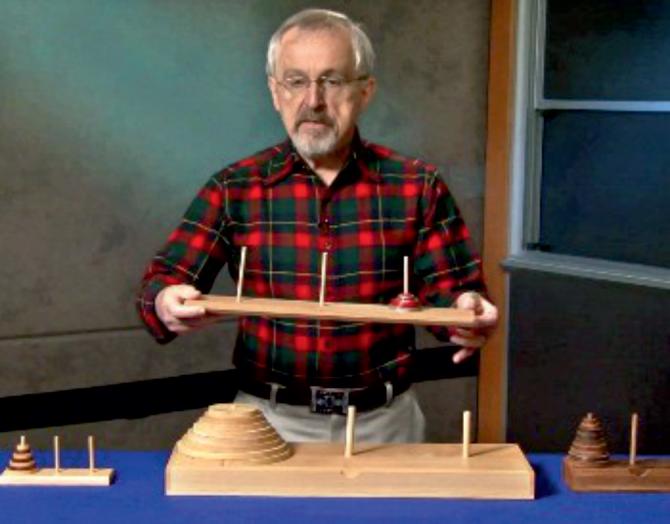
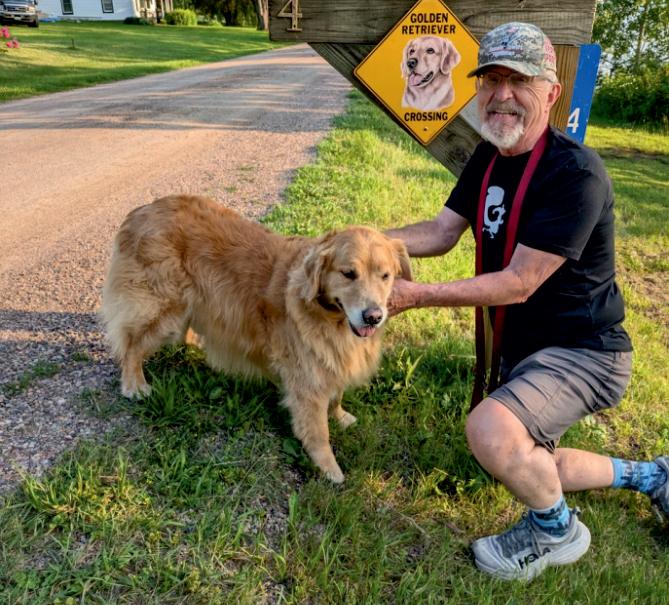
Richard's contributions to operations research, urban systems, and educational technology have pushed the frontiers of practice and knowledge. His work has tackled someofthemostimportantissuesconfrontingcontemporary society,fromemergencyresponsetofairaccesstoeducation. Richard's interdisciplinary perspective and dedication to bridging theory and practice are an inspiration to future generationsofscholarsandpractitioners.
Richard's legacy lives on through the numerous students, peers, and organizations he has guided and influenced. His emphasis on the interconnectedness of theory and practice, hispromotionofhuman-centeredlearning,andhisvisionfor technology-supported education continue to influence the developmentofacademicfieldsandpublicsystemsglobally
As operations research and education technology advance, Richard's legacy continues to be a source of inspiration. His life shows that the greatest breakthroughs take place where science,service,andimaginationintersect.Richard'slifeisan inspirationtoeveryonewhowishestoleavealastinglegacy based on knowledge, imagination, and an unwavering allegiancetothecommongood.
Richard'sMITcareerandbeyonddefinetheimpactofcrossdisciplinary scholarship, practical application, and transformational leadership. As a trailblazer in operations research, an advocate for technology-enhanced education, and a mentor to countless students, Richard has left an invaluable legacy on academe, public policy, and international education. His legacy is one of service, innovation, and never wavered confidence in the power of human intellect to address the world's most intractable challenges. In a world of rapid technology and global crisis, Richard'sworkandlifeserveasareminderthatsuccessisnot to be measured in awards or technical capability, but by the long-term influence we leave on people's lives and on the systemsthatstructureourworld.
In a world increasingly defined by rapid technological change, the future of learning is being shaped not in lecturehallsbutinthemindsofboldvisionaries. These innovators, technologists, entrepreneurs, and policymakers—arereimagininghowknowledgeisdelivered, accessed,andapplied.Astraditionaleducationmodelsevolve tomeetthedemandsofadigital-first,skills-basedeconomy,a newgenerationofchangemakersispavingthewayformore personalized,inclusive,andimpactfullearningexperiences.
For decades, learning systems worldwide have emphasized memorization over understanding, and conformity over creativity Butthefutureoflearningdemandssomethingmore dynamic, human-centric, and future-proof. Innovators today arechallengingtherigidstructuresofconventionalschooling, turning them into flexible, learner-driven ecosystems that valuecuriosityasmuchascompetence.
ConsiderFinland’s modelof phenomenon-basedlearningor India’s emerging startup ecosystem around edtech. These modelsprioritizeinterdisciplinaryexplorationandreal-world application,showingus,thateducationcanbebothrigorous and relevant. This shift is a direct response to the growing realization that students need more than information—they needcontext,criticalthinking,andtheabilitytoadapt.

One of the most significant contributions to the future of learning is personalization, largely enabled by artificial intelligence (AI), machine learning, and data analytics Platforms like Khan Academy and Duolingo use adaptive learningalgorithmstotailorcontenttoalearner’space,style, and needs. This empowers learners to take control of their educational journey, reinforcing their strengths while targetingareasthatneedimprovement.

AI-driven tutors, immersive virtual reality classrooms, and gamified learning apps are no longer futuristic concepts—they are here, changing how students from rural villages to urban centers experience education. Innovators likeSalKhan,DaphneKoller,andothershavebeenpivotalin bringingthesetoolstothemainstream,helpingbridgegapsin accessibilityandengagement.
As career paths become less linear and industries transform overnight, the need for continuous learning has never been
more apparent. The future of learning extends well beyond childhood or formal degrees. Innovators are fostering a culture where learning is lifelong, integrated into everyday life,anddrivenbycuriosityandnecessity
OrganizationssuchasCoursera,edX,andLinkedInLearning have democratized access to world-class education, offering courses from top universities and professionals across the globe.Whetherit’samid-careerpivotintodatascienceoran upskilling initiative in cybersecurity, the ability to learn on demandisrewritingthenarrativeofeducation.
Moreover,micro-credentialinganddigitalbadgesaregaining tractionasrecognizedindicatorsofskillsmastery.Thesebitesized certifications cater to the fast-paced learning cycles of today’sworkforce,offeringbothflexibilityandrelevanceina worldwheretimeandattentionareinshortsupply
While technology plays a critical role, true innovation also liesinmakinglearningequitableandinclusive.Thefutureof learning must account for socioeconomic, geographic, and cultural disparities. Innovators in this space are leveraging community-based learning, multilingual content, and lowbandwidthtechnologiestoreachunderservedpopulations.
Organizations like Pratham in India, Ubongo inAfrica, and Room to Read across Asia are prime examples of this commitment. They use storytelling, community volunteers, and localized curricula to bring education to children who mightotherwisebeleftbehind.Theaimisnotjustaccess,but meaningful learning that empowers individuals and uplifts communities.
One of the most underestimated aspects of innovation in education is the role of the teacher As tools evolve, so must the teacher’s role—from information providers to learning experience designers. Teachers are increasingly becoming facilitatorswhoguide,mentor,andinspire.
Innovative professional development platforms are supportingeducatorsinadoptingnewpedagogies,integrating digital tools, and focusing on socio-emotional learning. Programs like Teach for All and Google for Education empowereducatorstoembracechange, leftbehindinthetech-driventransformation
The future of learning depends as much role of teachers as it does on new technologies. fostering human connection, empathy, worldwherescreensareeverywhere,but isdeclining.
Theinnovationsshapingthefutureoflearningarenotisolated developments. They are interconnected shifts responding to the demands of an increasingly complex world Environmental challenges, mental health crises, digital overload,andAI-drivenautomationareforcingustorethink whatitmeanstobeeducated.
Innovators today are not just focused on academics, they’re integrating wellness, ethics, digital citizenship, and sustainability into the curriculum. Schools are evolving into hubsofinnovationandcommunitybuilding,emphasizingthe holisticdevelopmentoflearners.
Fromhybridmodelsandflippedclassroomstoproject-based assessments and global collaboration, the education of tomorrow will look radically different from what most of us experienced.And that’s a good thing. Because the future of learningisnotaboutstaticknowledge,it’saboutadaptability, creativity,andlifelonggrowth.
The path forward is both exciting and uncertain. But what’s clear is that education can no longer be one-size-fits-all or confinedtofourwalls.Thankstothevisionariesreshapingthe landscape, the future of learning promises to be more inclusive,personalized,andempoweringthaneverbefore.
As we move ahead, one thing remains certain: the greatest asset we can cultivatein any societyis the capacityto learn, unlearn, and relearn. And the innovators leading this transformation are ensuring that future generations will not justsurvive,butthriveinaworldthat’sconstantlychanging.





Intoday’schangingworld,teachershaveevolveda greatdealfromjustbeingteachers.Thosedaysof teachersjustimpartingfactsareover,butnowthey needtore-engineerthemselvesasfacilitators,mentors,and innovators.Theseinnovativeteachersaretheoneswhoare leadingthechange,breakingthepathtoanewlearningera. Theycombinecreativity,innovativetechnology,andgood pedagogytodrawstudentsintomorepassionate,more relevant,andmoreinclusivelearning.Theyareawarethat eachstudentcomeswithauniquesetofneeds,experiences, andstudyhabits.Withtheassistanceofnewpracticeand technology,theyareabletodifferentiateinstruction,build criticalthinking,andpromotecollaboration.
This article explores the best practices and qualities that make these teachers stand out and how their new-school pedagogies are reshaping the landscape of learning.
Thehigheststandoutqualityofprogressiveteachersisthat theyneverlosesightofhavingagrowthmindset.They neverviewchallengesashindrancesbutasmeansto growth,bothforthemselvesandtheirstudents.

Theythemselvesopenuptofeedback,reflectonpractice, andareopentobeingrewritten.Itissuchanattitudethat theydevelopaclassroomcultureinwhichcuriosity, perseverance,andlearningfromfailurebecomeawayof life.Throughthisprocess,theymakeitpossibleforstudents toownuptolearningprocessesconfidentlyandflexibly
Whatunderliesallthisisalifelonglearningorientation. Visionaryteachersareinacontinuousstateofprofessional

development,eitherfromformaleducation,peerstudy networks,orself-directedlearning.Theyareawareofthe latestcognitionscienceresearch,newtechnologies,and optimalinstructionalpractices.Throughthispractice,they areattunedtochanginglearnerneedsandlearning environment.Thisenablesthemtoapplyproperand effectivestrategies.Intheprocess,theyprovethatlearning doesnotstopatadegreebutcontinuestoevolve.
Technology,whenappliedinathoughtfulmanner,isagreat levelerintheannalsofeducationalrevolution.Innovative pedagoguesutilizeelectronicplatformstooffercustomized, interactive,andstudent-drivenlearning.Bycamouflaging undertheveilofgamifiedlearningclasses,online collaborativecommunities,andvirtualandaugmented realities,technologyenablestheseeducatorstoescapethe
shacklesofconventionalteaching.Theyarenotimpostors ofthetitleoftechnologywarriorsbutemployitasa systematicmeansofdevelopingcriticalthinking,creativity, andcollaborationamongstudents.Second,innovative teachersusedata-driventechnologytomeasurestudents’ attainmentinrealtimesothattheycangivemore responsiveandtargetedinstruction.
Learninganalyticsandadaptivelearningsoftwaregive feedbackregardingstudents’patternsoflearning.Teachers canthenmodifythepresentationofmaterialaccordingto achievementandinterest. Responsiveteachingpermits differentiatedinstructionandamoredifferentiatedculture oflearningwhereallthestudentscanbesuccessful.Such teachersalsoteachstudentsascreatorsofcontent,andnot justasconsumers.Bypedagogyandtechnicalskills,they turntechnologyintoanempowermenttoolaswellasone thatraisesengagementwithlearningmaterials.
CommunitiesBeyondcurriculumandinfrastructure, innovativeeducatorsarecharacterizedbytheirabilityto buildinclusiveandempoweringlearningcommunities. Culturalresponsiveness,relationships,andstudentvoiceare important.Inresponsetotherealitythateachstudent possessesadiversityofbackgroundsandexperiences,they adapttheirpracticesoastorecognizeandappreciatesuch diversity spaceswherethestudentsaremadetofeelvalued, recognized,andthemselves. longwayinimprovingstudentmotivation,self-esteem,and learning.Ofsimilarimportanceishighlightingstudent agency
Progressiveteacherssubstitutetheteacher-leddidactic pedagogywithonethatbelievesinthestudentasan empoweredlearner Theyengagestudentsingoalsetting, problemsolving,andevenplanningthecurriculum.This encouragesownershipandindependenceoflearning.They allowlearnerstodevelopacademicproficiencycombined withemotionalintelligence,leadership,andsocial responsibilitythroughapplication-led,interdisciplinary,and project-basedapproaches.Theclassroomisthusasettingin whichlearnersarenotonlytaughtwhattoknowbutalso howtheycanusefullyapplyitwithintheframeworkof theirownlifeandcommunity
Innovativeteachertacticsarenotdazzlingtechnologyor lockstepalgorithms.They’reattitude,reflectiveapproach, andgenuinecommitmenttostudentsuccess.Theyrealize innovationisn’tconcerningmoreworkorlevelof complexityincreases.Itisconcerningperformingbetterby creatingmoreengagement,moreindividualizedsupport, andmoresuccessforallstudents.Andaseducationitself evolvesinthe21stcentury,theseteachersthemselvesare themselvesmastermentors,showingwhatcanhappenwhen imagination,empathy,andthehumanspiritoflearningare


adoptingtheirapproachesandscalingtheirpractice,schools




